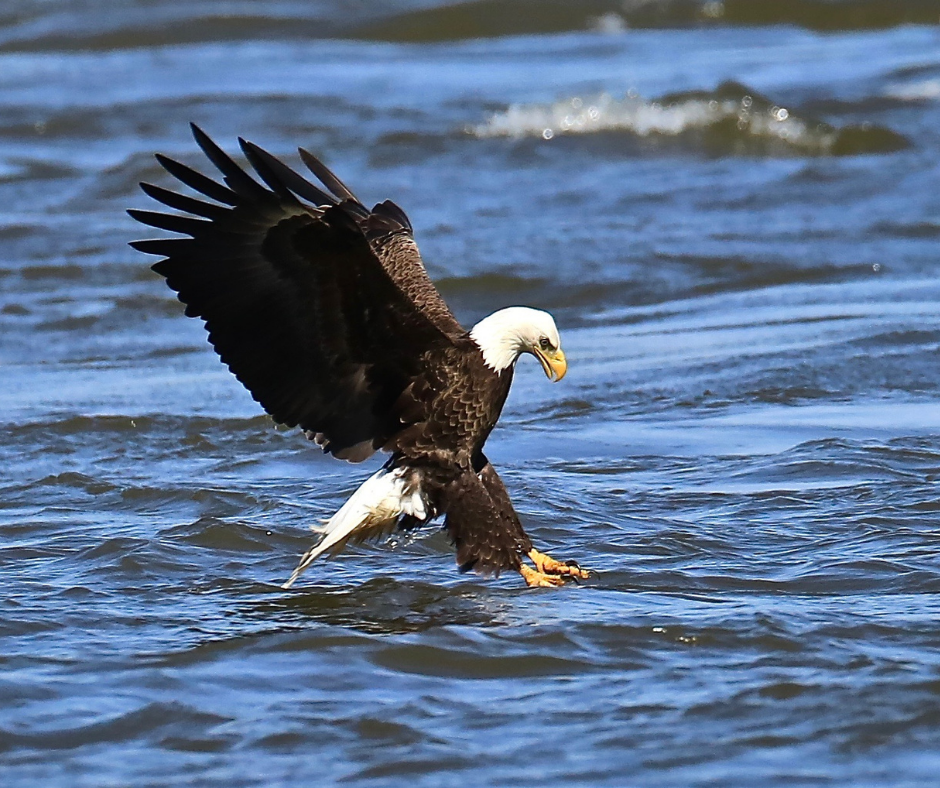
LOCAL OUTDOOR NEWS — Local Shari Dodd says she spotted a single bald eagle near her home along Tims Ford lake several years ago.
“I log birds in the eBird app and my first entry for them is March 2017,” Dodd says. “Since, them I’ve logged them 13 times.”
Dodd thinks that the eagles near her Hurricane Creek area home are wintering eagles because she spots them each August and September and then again each February and March. According to state wildlife officials, wintering bald eagles begin to arrive in our state each fall and peak in late January. By April 1, most will have returned to their nesting origins of southern Canada and the Great Lakes states.
“The first time we spotted one, it was a single adult,” she says. “Then we started seeing two. Then sometime around November, we saw a least three and possible four – two adults and one or two juveniles.”
Dodd says she identified the juvenile using the Merlin Bird ID app, which allows you to record a bird song and then identify it using their digital field guide of over 80,000 photos and bird songs.
“Its good habitat for them right here, so I’m not that surprised they are here,” Dodd say about her home near Tims Ford Lake. “We see a huge variety of birds and wildlife out here.”
From nearly extinct to flourishing in Tennessee
The history of bald eagles in America dates back to 1782 when federal officials named them our national symbol. Federal officials also allowed the widespread use of the pesticide DDT, which nearly wiped out the species. In fact from 1961 to 1983 there were no known successful eagle nest in the State of Tennessee.
They’ve made a a come back over the past 50 years due the the EPA ban of DDT as well as protections afforded the bald eagle under the Endangered Species Act.
In Tennessee, efforts to restore the state’s bald eagle population began in 1980 and continued through 2003 through the Tennessee Wildlife Resource Agency’s use of a process known as hacking. It involves bringing young eagles into artificial nests in Tennessee, raising then until they are old enough to fly, then releasing them with the hope that they would return to mate. Using the process, the state’s eagle population rose from just two pair in 1980 to over 344 in 2012. According to the state, there are over 500 bald eagles in the state including many right in Moore County.
January to March is peak mating and nesting season for bald eagles in Tennessee. During that time over 100,000 people flock to Reelfoot Lake — home to the largest population of bald eagles outside of Alaska –– in the northwest corner of the state to participate in over 400 eagle related activities. Closer to home, Radnor Lake State Park near Nashville boasts four resident eagles in their Aviary Education Center.
You can also take you chances at Tims Ford State Park, nearby Woods Reservoir, and Stones River in Murfreesboro where multiple nesting pairs have been spotted in the last mating season. •
{The Lynchburg Times is the only locally-owned newspaper in Lynchburg and also the only woman-owned newspaper in Tennessee. We cover Metro Moore County government, Jack Daniel’s Distillery, Nearest Green Distillery, Tims Ford State Park, Motlow State Community College, Moore County High School, Moore County Middle School, Lynchburg Elementary, Raider Sports, plus regional and state news.}
